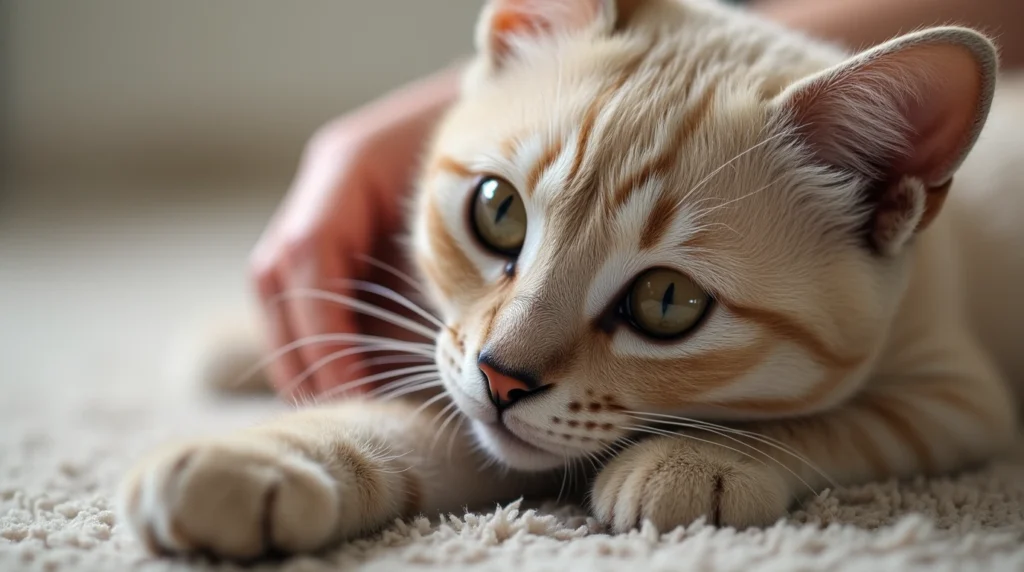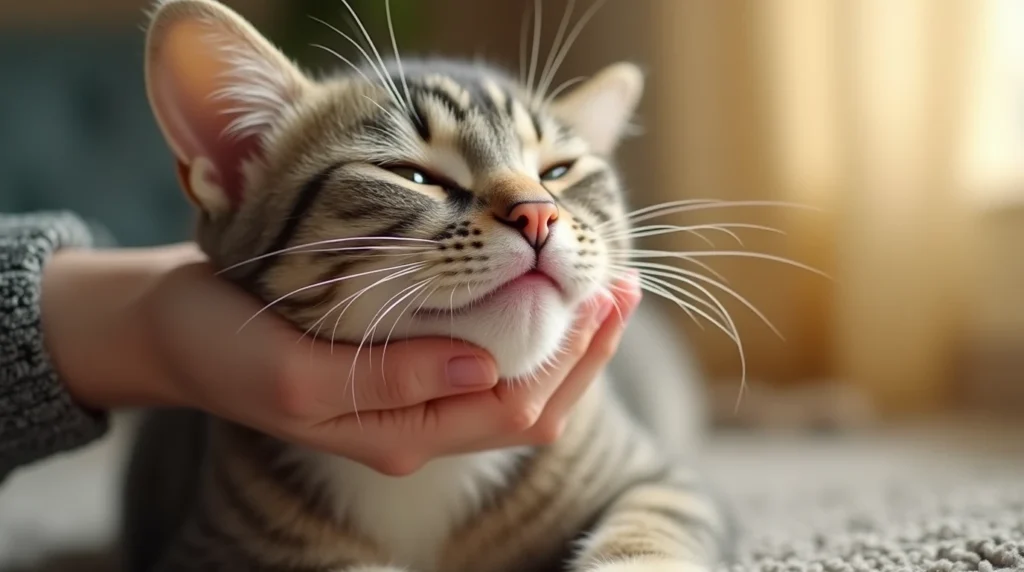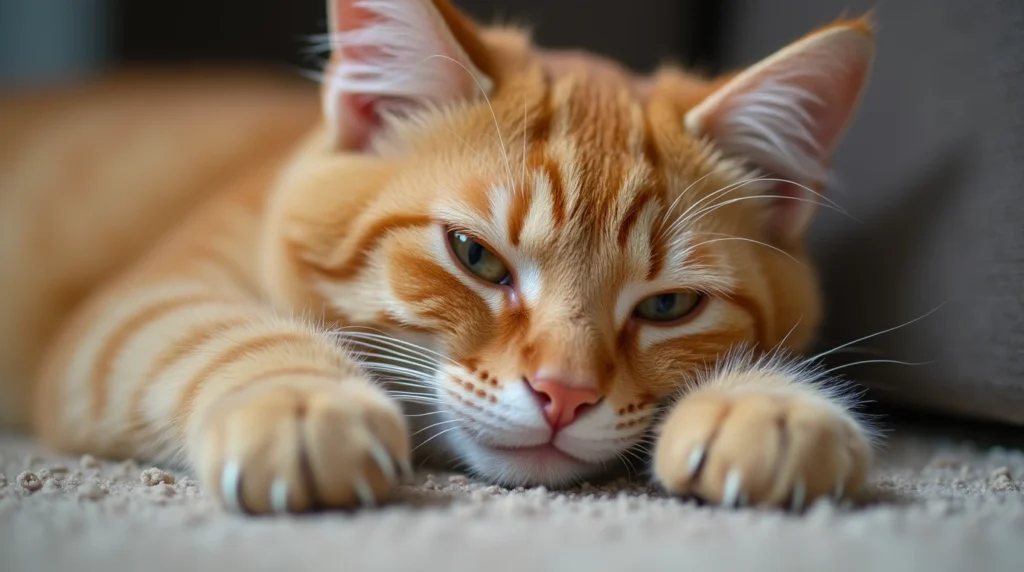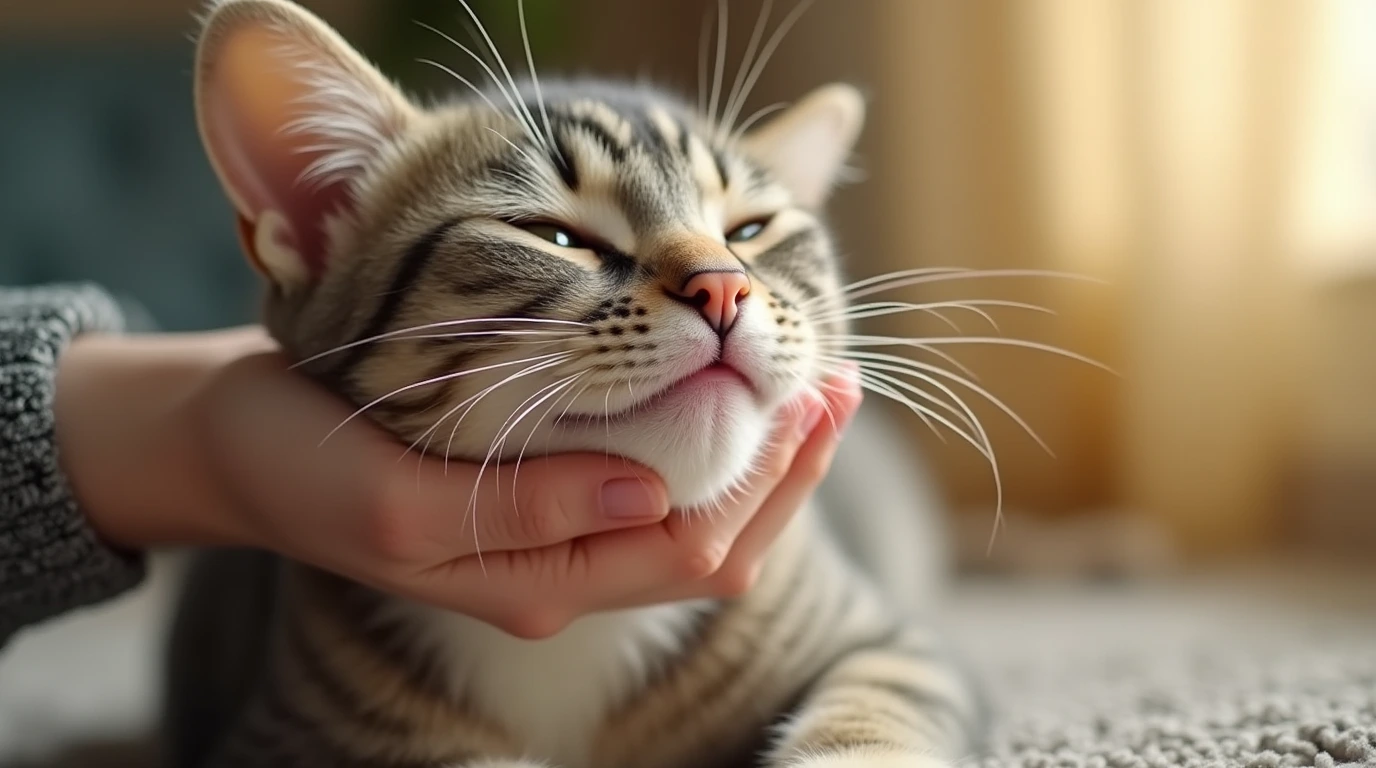Imagine this: your cat hops onto the couch, curls up beside you, and looks up with those soulful eyes. You reach out and begin a soft, slow stroke along their head, and like magic, a soothing purr fills the air. That simple gesture, the “cat pat,” is far more than a touch. It’s a bond-forming ritual, a form of communication, and for many cats, the ultimate sign of trust and affection.
Whether you’re a seasoned feline owner or new to the world of whiskers and purrs, understanding the right way to pat your cat can transform your relationship. In this comprehensive guide, you’ll learn eight delightful cat pat techniques that not only soothe and calm your feline friend but also deepen your connection. Along the way, you’ll discover the science behind the purr, common patting mistakes to avoid, and tips to make your touch more meaningful.
Let’s begin this journey toward better bonding — one gentle pat at a time.
Table of Contents
Understanding the Art of a Cat Pat

Why Patting Your Cat the Right Way Matters
Patting your cat the right way isn’t just about physical touch. It’s about respecting boundaries, building trust, and fostering emotional well-being. When done correctly, cat patting can:
- Strengthen the human-cat bond
- Promote calm and reduce feline anxiety
- Reinforce positive behavior
- Help you detect physical issues early
Every cat has preferences. Learning those preferences through intentional patting allows you to connect more deeply with your furry companion.
Key Signs Your Cat Wants a Pat
Not every moment is a patting moment. Pay close attention to these body language cues:
- Tail held upright with a slight curve — a welcoming sign
- Head butts — a way of claiming you as part of their social group
- Slow blinking — an invitation to approach
- Soft meowing or purring — indicates comfort and approval
Understanding these signals helps you initiate a pat that’s welcomed and enjoyed, not tolerated.
The 8 Delightful Cat Pat Techniques
1. The Gentle Head Pat
Start your patting journey with the classic gentle head pat. This technique involves:
- Using open fingers to lightly stroke the top of your cat’s head
- Avoiding tapping motions, which may startle or annoy
- Initiating brief pats that allow your cat to indicate if they want more
This area is rich in scent glands, so when your cat rubs their head against you, they’re marking you as a friend.
2. The Behind-the-Ears Rub
Most cats adore being rubbed behind the ears. Why?
- Nerve endings in this area respond well to gentle pressure
- It simulates social grooming
- Encourages deeper purring and relaxation
Use your thumb and forefinger to gently rub the base of the ears in small circles.
3. The Chin Scratch Combo
The underside of the chin is a goldmine for cat affection — if your cat trusts you.
- Use your fingers to scratch gently under the chin
- Combine with a slow head pat to create a multi-sensory experience
- Ideal when your cat is lounging or half-asleep
Chin scratches release calming hormones and show your cat that you’re a safe presence.

4. The Forehead Glide
This technique mirrors the way cats groom each other:
- Start at the center of the forehead
- Gently glide your hand down to the bridge of the nose
- Repeat slowly and softly
This glide mimics feline social bonding behavior and triggers relaxed purring.
5. The Back Stroke Pat
Your cat’s back is another safe zone — when approached correctly.
- Start at the neck and stroke down the spine
- Use your full palm with light pressure
- Avoid stopping at the base of the tail unless you know your cat enjoys it
This technique is calming and helps spread your cat’s scent along their body, which reinforces a sense of safety.
6. The Side Belly Pat (With Caution)
Some cats enjoy a belly pat — but only under very specific conditions:
- Your cat must expose their belly on their own
- Use light, open-handed strokes
- Stop immediately if claws or biting appear
Cats expose their belly when they feel vulnerable. Respect this trust and be gentle.
7. The Tail Base Rub
This technique can be a hit or miss:
- Use small, circular rubs at the base of the tail
- Watch for signs of overstimulation, like twitching or sudden movements
- End the pat if your cat appears agitated
For some felines, this spot is highly pleasurable — for others, it’s too sensitive.
8. The Lap Nap Pat
Nothing beats the comfort of a cat curling up in your lap. This is your chance to reinforce affection:
- Use soft, slow strokes along the back and shoulders
- Avoid the belly unless invited
- Keep your movements consistent and soothing
These lap-time pats help your cat feel secure and deeply bonded to you.
Common Mistakes to Avoid When Giving a Cat Pat
Even with the best intentions, you might be making some patting errors. Here’s what to steer clear of:
- Ignoring signals: Always watch your cat’s body language.
- Over-petting: Too much of a good thing can lead to overstimulation.
- Rough touch: Cats prefer soft, deliberate movements over vigorous petting.
- Touching off-limit zones: Avoid the belly and paws unless your cat gives clear consent.
Patting should be an invitation — not an obligation.
The Science Behind the Purr
How Cat Purring Works
Purring begins in the brain. A repetitive neural oscillator sends messages to the voice box muscles, causing them to twitch at a rate of 25 to 150 vibrations per second. This causes a separation in the vocal cords, which results in the purring sound.
Purring is associated with:
- Relaxation
- Healing (vibrations can stimulate tissue regeneration)
- Pain relief
- Stress reduction
Why Certain Cat Pat Techniques Trigger Purring
When you use effective cat pat techniques, you’re stimulating nerve endings that connect to the cat’s parasympathetic nervous system. This releases endorphins, making your cat feel safe, happy, and calm.
That’s why a well-timed chin scratch or back stroke can set off a symphony of purrs.

Pros and Cons of Patting a Cat
Pros
- Strengthens your relationship with your cat
- Provides comfort and emotional support for both of you
- Helps reduce anxiety and stress in your cat
- Can help you detect early signs of injury or illness
Cons
- Not all cats enjoy being patted
- Misreading cues can lead to scratches or bites
- Over-petting can cause aggression or overstimulation
Always let your cat lead the interaction.
Conclusion: The Joy of the Perfect Cat Pat
Mastering the art of the cat pat is one of the simplest and most rewarding things you can do for your feline companion. From the gentle head pat to the lap nap stroke, each technique offers a new way to say, “I see you, I respect you, and I care.”
Pay close attention to your cat’s signals. Let them guide the interaction. In return, you’ll earn their trust, affection — and that ever-so-satisfying sound of a purr that vibrates with love.
And when your cat begins to seek out your hand, nuzzle into your palm, and purr contentedly beneath your touch, you’ll know you’ve become fluent in a language without words.
Ready to explore more feline insights? Visit www.meowrealm.com for tips, products, and stories that celebrate the cat-human bond. Don’t forget to share this article with your fellow cat lovers!
Frequently Asked Questions About Cat Pat
What is the best spot to give a cat pat?
Start with the head, behind the ears, or the back. These are generally safe zones. Avoid the belly or tail unless your cat invites you.
Why does my cat purr when I pat them?
Purring can indicate contentment, relaxation, or even healing. Your cat pat likely stimulates areas connected to these calming responses.
Can I pat my cat too much?
Yes. Over-petting can lead to overstimulation, especially in sensitive cats. Watch for warning signs like tail flicking or sudden movements.
Is it okay to pat my cat’s belly?
Only if your cat exposes their belly willingly and remains relaxed. Otherwise, this area is best avoided.
How can I tell if my cat doesn’t like being patted?
Look for signs like ears flattening, tail swishing, growling, or your cat moving away. These are clear cues to stop.

